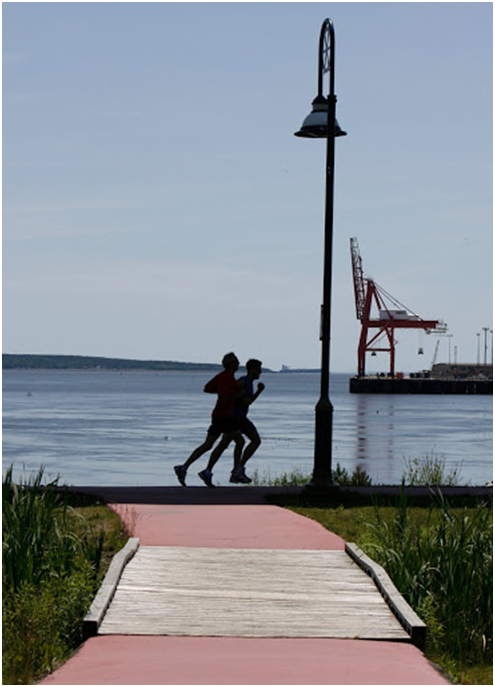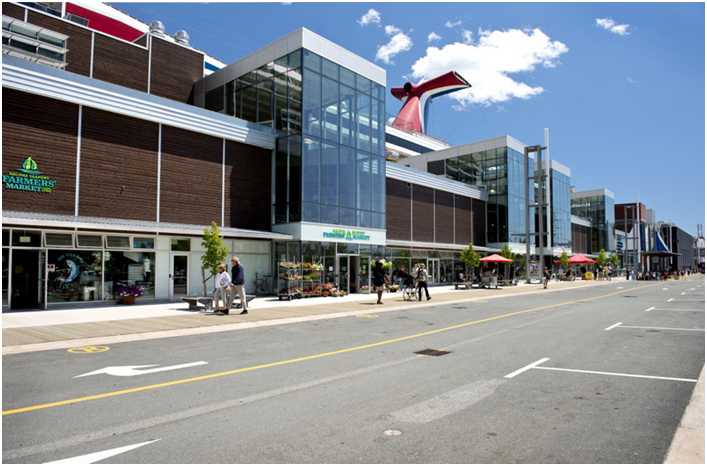Global economic growth has led to increased cargo through put in many Canadian ports. Increased cargo often does not mean much to local communities as it is usually destined for North American inland markets. The net result may be “global change – local pain.” The port’s host community may not welcome cargo growth due to the traffic delays, congestion, limited waterfront access and environmental concerns it brings. Inland customers do not suffer these negative port externalities. Failing to address these issues could lead to local anti-port protests. The underlying equity issue is “who gains versus who pays.”
Port-community conflicts can arise quickly during a crisis. To effectively handle a crisis, ports must build their “reputational capital” in peaceful periods to predispose the community to open discussion rather than hostile opposition. This can be achieved through a formal process such as Port Metro Vancouver’s Community Relations Department, or informally by encouraging port involvement in local organizations to understand community concerns.
Today, most firms recognize they must be good corporate citizens by considering the needs and desires of their host communities. This acknowledgement is reflected in the terms: “social license”, “social operating license” and “corporate social responsibility.” A social license can be defined as the community’s acceptance and belief in the value of the port’s activities.
Port-community conflicts can arise when there is a failure to respect local land use customs (such as First Nations sites, heritage properties, religious areas and community icons). Other port-community conflicts come from not giving timely notice of the port’s plans and actions as well as not paying fair market compensation for detrimental activities and land acquisitions. Essentially, there is a need for a clear recognition of the community’s role in granting the port its social license to operate.
A social license is based on the beliefs, perceptions and opinions of the local community. It is granted by the community and is intangible, dynamic and non-permanent. A port’s social license must be earned and maintained through vigilance and community involvement as “constructive engagement” in which the port and community stakeholders achieve mutual goals.
Given the need for Canadian ports to obtain social licenses from their host communities, what steps have they taken? A brief sample survey of Canadian ports found:
- Prince Rupert Port Authority’s community investment fund supports projects enhancing the local area. In 2011, the fund contributed $475,000 for the marine rescue society, community landscaping, the Centre for the Arts and the Prince Rupert Library.
- Nanaimo Port Authority provided public access to Fisherman’s Pier and contributed $1 million for the new Port Theater on the waterfront.
- Port Metro Vancouver (PMV), Canada’s largest port, interacts with sixteen municipalities and several First Nations. PMV’s Community Relations Department established a First Nations Engagement Strategy to develop a long-term relationship to better understand the historical use of land, develop consultation and build trust. Similarly, PMV created community liaison committees to identify its neighbours’ issues and aspirations. PMV uses one percent of its net income to provide scholarships, support a high school leadership program (including Port internships) and fund local events (between 60 and 75 annually) and community-based environmental programs.
- Hamilton Port Authority has worked with its host communities in developing wildlife parks, providing waterfront space for a marine museum and a berth for the historic HMCS Haida.
- Saint John Port Authority participated with Saint John Waterfront Development in developing Harbour Passage – a walking/jogging trail around the inner harbour.
- Halifax Port Authority’s Seaport cruise terminal provides exhibition space, public spaces, museums, cafes and retail space. HPA donates time, expertise and financial support to community functions such as charities, cultural activities and skills-development programmes. HPA supports the Atlantic Film Festival, NS Multicultural Festival, Halifax Seaport Beerfest, the Mawio’mi Halifax International Pow Wow, and the Mission to Seafarers.
- St. John’s Port Authority’s annual Harbour Lights fundraiser supports a lunch programme in local schools as well as scholarships and local events, including providing a unique backdrop for musical shows, television broadcasts and film shoots.
Overall, Canadian ports are interacting with and contributing to their host communities. These positive steps help maintain their social licenses. Seeking a social license from a port’s perspective is a complicated issue. Balance is needed between maintaining its local social license and the port’s broader national and regional commercial function. The balance will vary among ports, but maintaining a social license is an essential function for all ports.
 Nanaimo’s Port Theatre.
Nanaimo’s Port Theatre.
 Harbour Passage in Saint John.
Harbour Passage in Saint John.
 Halifax Seaport.
Halifax Seaport.